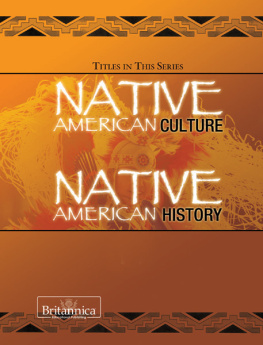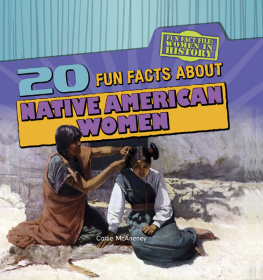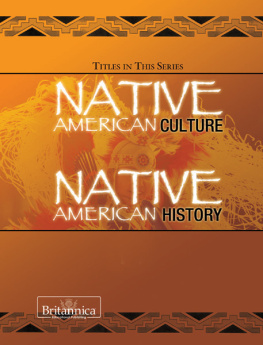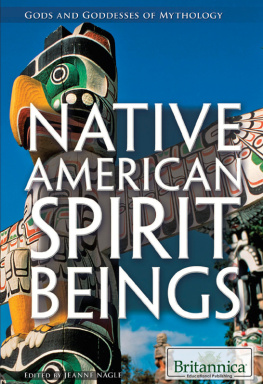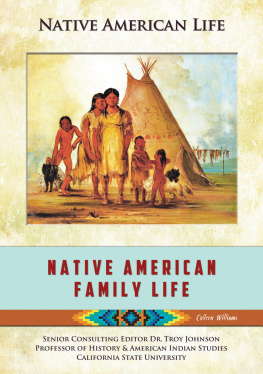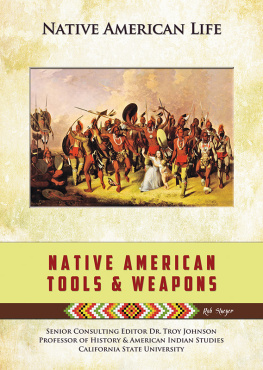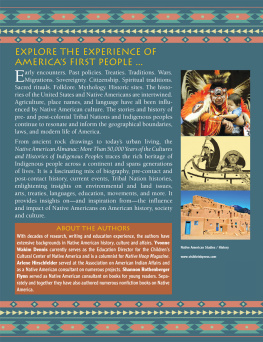NATIVE AMERICAN CULTURE
THE NATIVE AMERICAN SOURCEBOOK
NATIVE AMERICAN CULTURE
EDITED BY KATHLEEN KUIPER, MANAGER, ARTS AND CULTURE

Published in 2011 by Britannica Educational Publishing
(a trademark of Encyclopdia Britannica, Inc.)
in association with Rosen Educational Services, LLC
29 East 21st Street, New York, NY 10010.
Copyright 2011 Encyclopdia Britannica, Inc. Britannica, Encyclopdia Britannica, and the Thistle logo are registered trademarks of Encyclopdia Britannica, Inc. All rights reserved.
Rosen Educational Services materials copyright 2011 Rosen Educational Services, LLC. All rights reserved.
Distributed exclusively by Rosen Educational Services.
For a listing of additional Britannica Educational Publishing titles, call toll free (800) 237-9932.
First Edition
Britannica Educational Publishing
Michael I. Levy: Executive Editor
J.E. Luebering: Senior Manager
Marilyn L. Barton: Senior Coordinator, Production Control
Steven Bosco: Director, Editorial Technologies
Lisa S. Braucher: Senior Producer and Data Editor
Yvette Charboneau: Senior Copy Editor
Kathy Nakamura: Manager, Media Acquisition
Kathleen Kuiper: Manager, Arts and Culture
Rosen Educational Services
Jeanne Nagle: Senior Editor
Nelson S: Art Director
Cindy Reiman: Photography Manager
Matthew Cauli: Designer, Cover Design
Introduction by David Nagle
Library of Congress Cataloging-in-Publication Data
Native American culture / edited by Kathleen Kuiper. 1st ed.
p. cm. -- (The Native American sourcebook)
In association with Britannica Educational Publishing, Rosen Educational Services.
Includes bibliographical references and index.
ISBN 978-1-61530-266-6 (eBook)
1. Indians of North AmericaSocial life and customs. 2. Indians of North AmericaSocial conditions. 3. Indians of North AmericaHistory. I. Kuiper, Kathleen.
E98.S7N38 2011
970.004'97dc22
2010010369
On the cover: Dancer in traditional regalia at a Virginia powwow in 2005. Stan Honda/AFP/Getty Images
Pages : Rich Reid/National Geographic Image Collection/Getty Images
CONTENTS











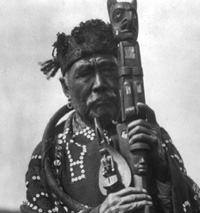


INTRODUCTION

A man in dance regalia at the United Tribes Powwow in Bismarck, N.D. MedioImages/Getty Image
P erhaps the greatest mistake one could make when considering Native American culture would be to assume that there existed only one such homogeneous culture among the indigenous peoples of North America. Rather, there is an assortment of distinct and diverse cultural aspects that, when bound together, make a whole. This book will show that there isnt just a group of American Indians, but rather individual societies with marked differencesand similaritiesthat form what is called Native American culture.
The first peoples of North America are believed to have arrived on the continent as the result of Asiatic migrations over what is today known as the Bering Strait. Though some recent evidence disputes this theory, these peoples are supposed to have traveled over a land bridge that existed during the time of these migrations, between 20,000 and 60,000 years before the present era. The land bridge was most likely caused by glacial activity that lowered ocean levels to such an extent that groups of Stone-Age hunters were able to travel on foot from present-day Russia to what is now Alaska. Once across, these groups split up in a broad fashion spreading throughout the continent and beyond: from Greenland and todays eastern United States seaboard to the east, to the tip of South America to the south, and extending past the Arctic Circle in the north.
As a generally recognized point of reference, Christopher Columbuss arrival in the New World begins a natural curiosity by Europeans about this amazing frontier. It is believed that in 1492 there existed a population of between 600,000 and 2 million indigenous peoples living in the areas now known as Canada and the United States. This population segment and its descendants are the focus of this book.
Since the turn of the 20th century, one tool anthropologists use in their studies is defining culture areas, which are geographic regions where similar cultural traits co-occur. There are 10 commonly defined culture areas for Native Americans. The Arctic is comprised of the northernmost North America and Greenland, while the Subarctic encompasses the Alaskan and Canadian region south of the Arctic, not including the Maritime Provinces. The Northwest culture area is defined by a narrow strip of Pacific coast land and islands from the southern border of Alaska to northwest Canada. Roughly all of present-day California and the northern section of Baja California (northern Mexico) make up the aptly named California culture area. The Plateau region lies between the Rocky Mountains and the Pacific Coast mountain system. The Great Basin culture area encompasses almost all of present-day Utah and Nevada, as well as parts of Oregon, Idaho, Wyoming, Colorado, Arizona, Montana, and California. The Southwest culture area involves the southwestern United States. Indigenous people living in the grasslands bounded by the Mississippi River, the Rocky Mountains, the present-day provinces of Saskatchewan and Alberta, and parts of Texas are part of the Plains culture area. The Northeast culture area encompasses a wide swath of the United States bounded by the Atlantic Ocean and the Mississippi River, arced from the North Carolina coast northwest to the Ohio River, and back southwest to the Mississippi. Finally, the Southeast culture area is made up of parts or all of several American statesFlorida, Georgia, Alabama, Mississippi, Louisiana, Tennessee, the Carolinas, Virginia, and Arkansas.
Next page
